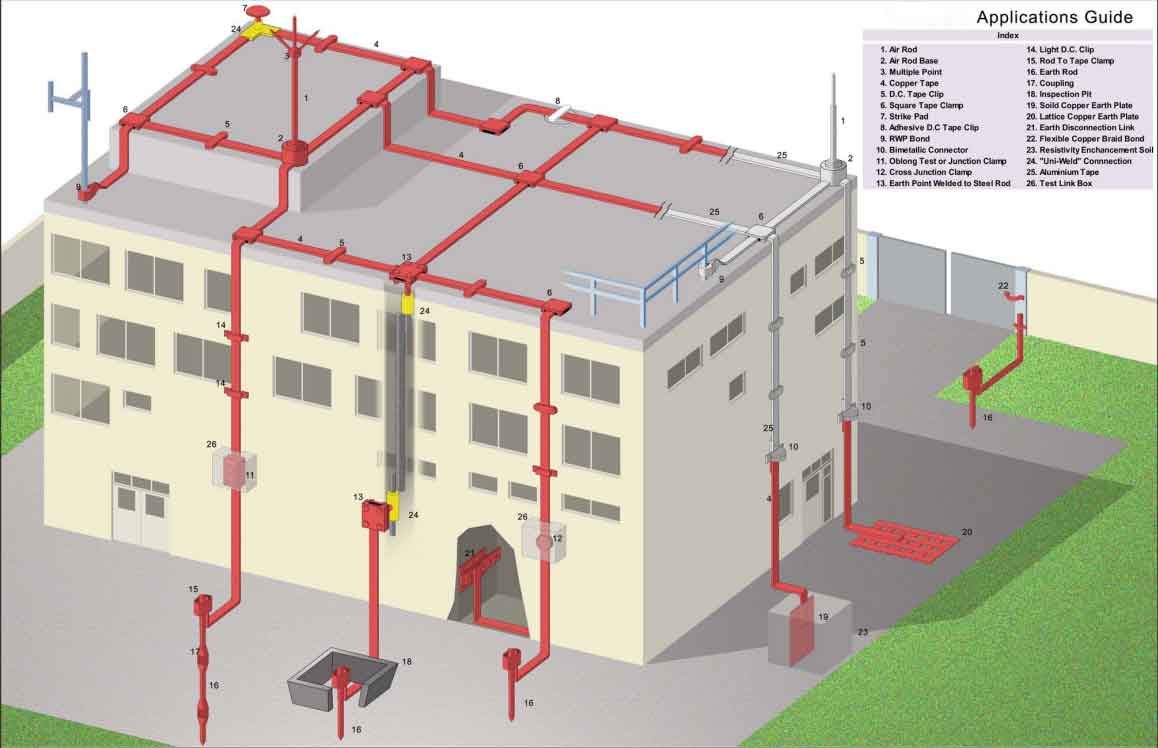As the name implies, lightning protection is to prevent direct or side lightning strikes, and grounding is to introduce lightning current to the ground. Electrical grounding is divided into protective grounding and working grounding. Protective grounding is to prevent electric shock caused by equipment leakage and lead to electric shock accident, and lead leakage current into the ground. The working ground is for the normal operation of the equipment. The neutral point is directly connected to the ground to form a zero potential point (such as a transformer).
Grounding refers to the neutral point of the power system and electrical devices, the exposed conductive parts of the electrical equipment and the external conductive parts of the device are connected to the ground via conductors. Can be divided into working grounding, lightning protection grounding and protective grounding.
The working grounding is set by the needs of the power system operation (such as neutral grounding), so under normal circumstances there will be a long-term current flowing through the ground electrode, but only a few amperes to tens of amperes of unbalanced current. When a ground fault occurs in the system, a working current of thousands of amperes flows through the ground electrode. However, the current will be cut off within 0.05 ~ 0.1s by the relay protection device. Even for the backup protection, the action is generally within 1s.
Lightning protection grounding
Lightning protection grounding is grounding designed to eliminate the impact of overvoltage hazards, such as the grounding of lightning rods, lightning conductors, and lightning arresters. Lightning protection grounding will only have current flow under the action of lightning impact. The amplitude of the lightning current flowing through the lightning protection grounding electrode can reach tens to hundreds of thousands of amperes, but the duration is very short.
Protective grounding
Protective grounding is a grounding set to prevent equipment from endangering personal safety due to insulation damage and electrification, such as metal shells, reinforced concrete poles and metal pole towers of power equipment. The protective earth will only flow when the equipment insulation is damaged, and its value can be changed within a large range.
When the current flows through the above three ground electrodes, it will cause the ground electrode potential to increase, which affects the safety of people and equipment. For this reason, the potential rise of the ground electrode must be limited, or appropriate safety measures must be taken to ensure the safety of the equipment and personnel.
lightning rod
The difference between lightning protection grounding and electrical grounding:
1. Protective grounding refers to connecting the metal part of the electrical device that is not normally charged to the grounding device to prevent the part from being suddenly charged during the fault and causing damage to the human body.
2. Working grounding is to ground the neutral point of the transformer. Its main function is the stability of the system potential, that is, to reduce the low-voltage system due to one-phase grounding; lightning protection grounding and electrical grounding can be connected together. However, the lightning protection down-conductor and the protection connection down-conductor cannot be integrated on the ground and connected to the grounding electrode, because when lightning strikes the lightning current through the lightning protection down-conductor and enters the ground, it will be shunted by the PE wire On contact, personnel will be struck by lightning.
3. Lightning protection grounding and electrical grounding can be connected together. However, the lightning protection down-conductor and the protection connection down-conductor cannot be integrated on the ground and connected to the grounding electrode, because when lightning strikes the lightning current through the lightning protection down-conductor and enters the ground, it will be shunted by the PE wire On contact, personnel will be struck by lightning.
4. The down conductor of the PE wire protection ground should be connected to the ground electrode separately. The farthest distance between the down conductor of the PE wire and the down conductor of the lightning protection is better. It is required to be more than 10m. After the lightning current enters the ground along the down lightning protection conductor In order to let the lightning current flow into the ground, it will not spread from the down conductor of the PE wire to the device casing.
